NIL
ASU, Arizona offer test case for success in rev-share era
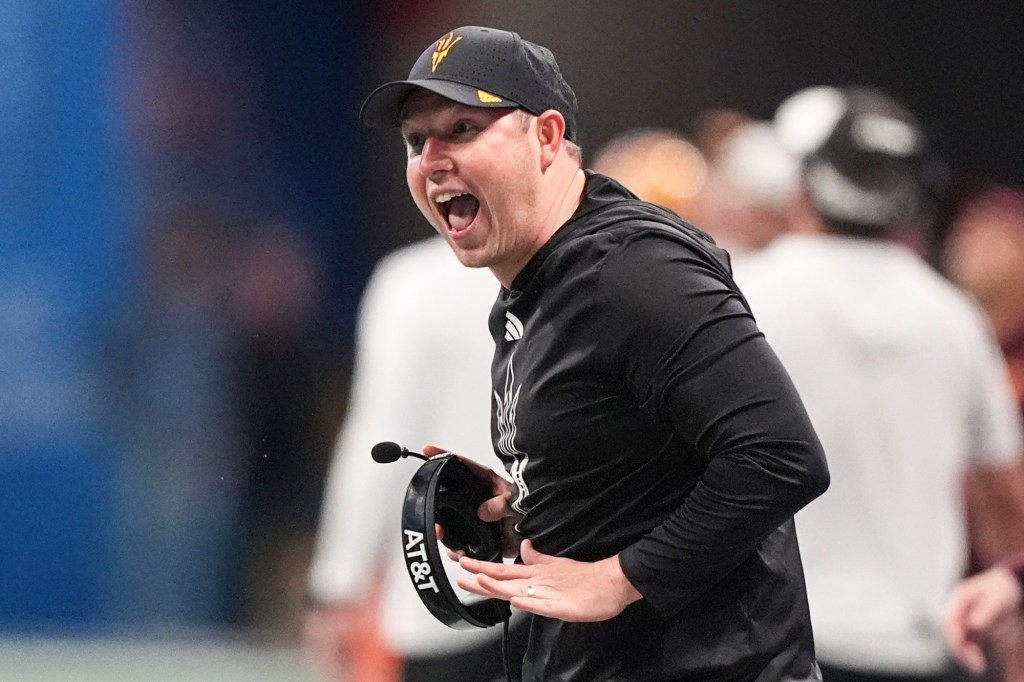
Ground zero for the new era of college sports is a 100-mile stretch of interstate in the Sonoran Desert. Which school, Arizona or Arizona State, will thrive in the era of revenue share and legitimate NIL? The outcome will reveal much about the competitive balance within the state and across major college sports.
Do campuses in major cities possess an advantage?
How might market competition from professional sports impact success?
Will high-profile basketball programs undercut football success?
The Sun Devils and Wildcats are bitter rivals competing in the same conference and the same (public) university system, but their locations and resources are wildly different.
Nowhere else is the contrast as stark.
UCLA doesn’t have a UC system rival located in a college town.
Washington and Washington State aren’t in the same conference or university system.
Georgia and Georgia Tech might be roughly comparable if their locations were flipped.
New York City, Philadelphia and Dallas are devoid of public universities that compete in the Power Four. Houston is bigger than Phoenix, but the Cougars don’t have a bitter natural rival in the Big 12.
The dynamics in Arizona will unfold against an established backdrop: Fair or not, the Sun Devils are considered an underachiever in major college football and basketball; the Wildcats are viewed as an overachiever.
But that backdrop seemingly has little relevance in the new era. The House vs. NCAA lawsuit settlement — former ASU swimmer Grant House is the named plaintiff — will change the economics of college sports like nothing else.
Two pillars are particularly relevant for the Sun Devils and Wildcats:
— Schools can share up to $20.5 million with athletes beginning in 2025-26. Across the power conferences, roughly $15 million will be earmarked for football, with $3.5 million to $4.5 million to men’s basketball and the rest to Olympic sports. (The Big 12 will permit schools to allocate as they see fit.)
— The power conferences created an NIL clearinghouse designed to eliminate the pay-for-play anarchy that has existed during the recent era of booster-run collectives. Athletes are now required to report NIL deals of $600 or more. A technology platform, NIL Go, will assess whether the contract terms fall within a reasonable range of compensation. Deals that are initially rejected can be altered and resubmitted, or the athlete can choose arbitration.
How might those factors play out in Tucson and Tempe? Where does the advantage lie?
Clearly, the Sun Devils will have more opportunities for legitimate NIL deals in metropolitan Phoenix (population: 5 million) than Arizona athletes will in Tucson (1 million).
But the Sun Devils also have more competition for dollars and attention with the Diamondbacks, Cardinals, Suns and Mercury.
In Tucson, all eyes are on the Wildcats. There’s only one option for businesses seeking exposure through partnerships with sports teams or franchises.
But that’s just one piece of the broader calculation in the post-House world.
Arizona will undoubtedly feel compelled to allocate more revenue to its men’s basketball program than the average power conference school. Every dollar plowed into basketball could be one less dollar available for football.
Kansas, UCLA, Kentucky and North Carolina are in similar positions. Arizona State is not. The Sun Devils have always valued football above basketball and seemingly can share the maximum with coach Kenny Dillingham’s roster.
“(Power Four) schools where basketball is king are going to have to make an important choice under the House settlement terms,” sports attorney Mit Winter wrote on the social media platform X.
We don’t know the specifics, but it’s easy to envision ASU spending $1 million-to-$2 million more on football than the Wildcats. (One thing they have in common: Both schools must fund baseball at a competitive level, which isn’t the case for some schools in the Big 12.)
Will the elite basketball program’s lofty status undercut resources for Arizona football?
Will the passion of a college town in the era of legitimate NIL trump the big business opportunities that exist in a pro sports market like Phoenix?
And how will the internal dynamics play out? Will the schools continue to subsidize their athletic departments at current levels? How committed to success is longtime ASU president Michael Crow? What about new Arizona president Suresh Garimella?
If the campus-level commitments are equivalent, the Wildcats and Sun Devils could offer an unfiltered look at the new world order — at the role fan passion, competitive priorities and business communities will play in shaping the roster-building process.
Will the big-city schools gain an insurmountable advantage?
Or does the edge lie with the only thoroughbred in a one-horse town?
Bitter rivals in the Big 12 could offer a fascinating test case for success in the post-House world.
*** Send suggestions, comments and tips (confidentiality guaranteed) to wilnerhotline@bayareanewsgroup.com or call 408-920-5716
*** Follow me on the social media platform X: @WilnerHotline
Originally Published:
NIL
Wink Martindale discusses Michigan vs Texas, state of college football in Citrus Bowl press conference
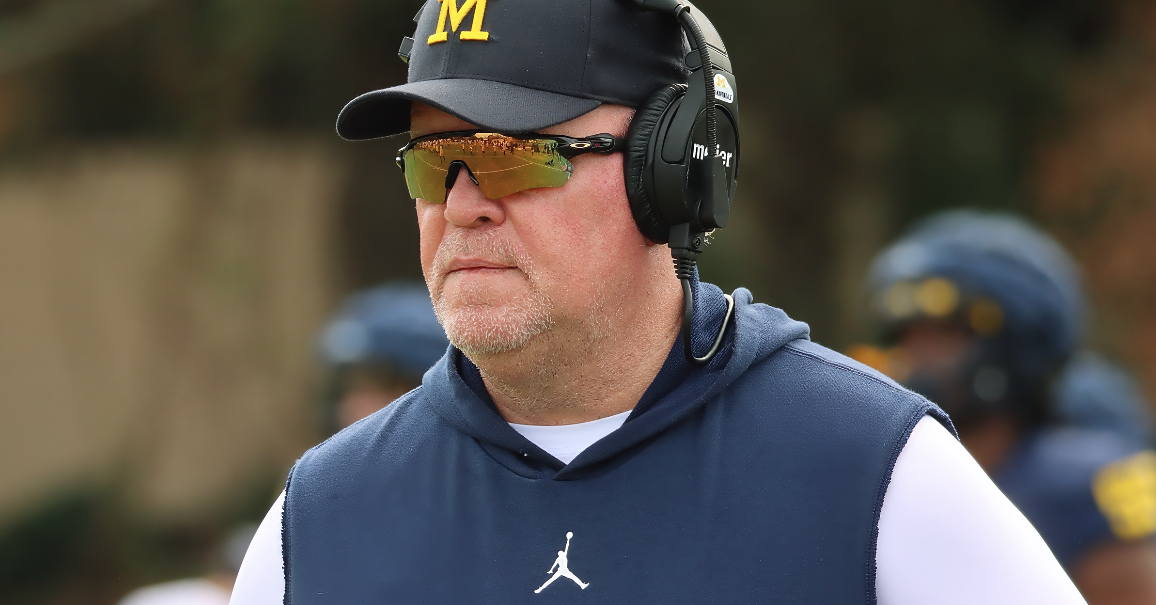
ORLANDO, Fla. — Sunday morning, three days ahead of the Michigan football team’s Citrus Bowl matchup against Texas and hours before Kyle Whittingham was introduced as the Wolverines’ head coach of the future, defensive coordinator Wink Martindale met with reporters in Orlando. He discussed Michigan’s defense, the challenges Texas presents, Michigan’s upcoming coaching changes, the sustainability of college football and more.
Opening statement
How is everybody doing? Hope you had good holidays and continue to have them. Happy New Year. We have been preparing for this for a while now and it is all coming together. We are excited about playing this game.
Q. What’s one thing you want fans to know about this team?
I can’t speak for the team but — I guess I can. (Laughter). Defensively, we take great pride in how hard we play, and to show the joy of the game. I think that that is why this game will be entertaining to watch. You have some really good players on the field, both sides.
Our guys love to compete, and they have been doing it all during Bowl prep. It is nothing new to us. We don’t have to ramp up because it is a game, and that is just how we are and how we do it.
Q. I don’t believe any of your defensive captains from the beginning of the season are active in this game. Who stepped up? Jimmy is one. Can you speak to the leadership you’ve seen from different players stepping up?
I think a bunch of different guys, Ray, Benny, Jimmy, which I knew that. I called that shot two years ago. Just each position group has somebody stepping up. I mean, Dom Nichols, young guy that is really prepared and has gotten better the last two weeks, even. Excited to see him play. The secondary, Shug, Jyaire Hill, he is a natural leader. TJ Metcalf.
Q. What have you seen from the Texas offense? What stands out?
You want me to go first? I mean, obviously, you look at the quarterback. I mean, he is a very talented young man. Respect to that entire family for — with his two uncles and his dad, which they said Coop was the better athlete out of all three of them.
Their offense is explosive. It is one of those things, though. It is like — remember — well, maybe — well, yeah, there’s some people my age (Laughter) — when you had that box of cereal and you didn’t know what the surprise was? It is the same thing going against that offense. You are not sure who is going to be there, but they are going to be very talented.
It is going to be a great challenge for us. Jim put it the best way you could. There is talent in each position group. There are playmakers. Respect to the quarterback and what they have, because they are a great team. We respect them. That is pretty much it.
Q. Coach … you’ve seen a lot of NFL talent. How does Jimmy (Rolder) stack up?
He is going to be a draft choice, a high draft choice. He is an excellent football player.
Q. How many starters will you be missing because of NFL opt-outs? And does that show how Michigan feels about any football game, whether it’s a playoff or not?
Well, I mean, that is a good analogy to it, about how the kids love playing football. That is a great analogy to it.
But every year is different. I think we are going to be missing three guys off the defense, and other guys have stepped right up. Guys that everybody has seen, the Michigan people here that have seen us play all year. That is one thing is that we have played a lot of different individuals.
It’s going to be fun to watch.
Q. Players describe you as someone who does tell it like it is often. How have you handled the last three weeks in terms of becoming a leader on a team without a head coach?
Well, I don’t know if you handle it is the right word. It is a tough situation. It is a tough situation. First of all, I know what we signed up for, in coaching, in the profession itself.
Moving — my wife has moved enough. It is hard because of not only the relationships we have. We have become family, because we spend more time — the coaches themselves, the assistants — together than we do with our families. I am to the point where I want to look out for them. I want to get them a job. However, whatever else comes from it — but they are professionals. They prepared the same way for this game as they have every other game.
But it is, like I was talking to Jimmy about it, with Twitter and everything else, it is entertainment for people to see all this. I am getting emotional talking about it. It is real life. There are little ones that have to be uprooted from school and things like that. So, it sucks.
But you can see how I handled it (Laughter).
Q. If you’d elaborate on that, just how you see college football now, where it is, is it sustainable?
I have no idea if it’s sustainable or not. You look at it as a fan and you say, Oh, there really was money there, you know what I mean? It has become so transactional now. The transactional part, everybody understands — when I say everybody, the parents and the kids, they understand it.
But they still have their — I don’t want to say high school mentality but younger mentality – now, there are kids getting NIL deals in high school, too. It’s crazy.
It is going to be a challenge, it really is. It is going to be a challenge. I think it is good for the game. I do think it is good for the game.
I think one of the challenges are that the kids that sign these NIL deals, they are going to be treated like pros. I mean, before long, you will see their NIL deals in the paper. You will see all the details — just like the NFL.
I think they have to have a salary cap at some time, at one point, they have to do it. They have to cap it, I would think. We will have to see, to follow it.
I know it is a great game, the game of football, and I reflect back now instead of looking forward. I love this game, and I hope that it keeps trending in the right direction. You are worried about the money part of it.
Q. I know we’ve seen Cam Brandt and Dom Nichols all season but can you speak to the edge position? You’ll be missing a couple starters.
You have TJ. Lu (Edokpayi) has come on, don’t you think? There are other young guys that we are going to get to see live in action, and I am looking forward to it. But the edge, they are going to be — we missed J-Stew last year, but it is a fun group to watch.
NIL
NIL Agents Laid Out In No Uncertain Terms The Handcuffs Shackling Petrino from UA to UNC


During his time as offensive coordinator at Arkansas, Bobby Petrino fought tooth and nail for his side.
So much so, in fact, that he reportedly got in a scuffle with his counterpart on the other side of the ball this past summer. He and Travis Williams never truly made up, as the latter and a raft of his assistants were the first to go when Petrino took over as interim head coach in late September.
Through it all, Petrino fought for his guys, especially the dual-threat quarterback upon whose shoulders so much rode. In the end, though, Taylen Green just couldn’t make enough of the right plays at the right times.
At critical juncture after critical juncture, the ball slipped from the fingertips of Green or a teammate. Not surprisingly, the Razorbacks also lost their grip on chances for win after win. When the dust cleared on the 2025 season, Petrino had an offense that finished among the nation’s best but only two wins to show for it.
Now, the 64-year-old has another fight in front of him.
Petrino May Want to Look Into Taxidermy after This
Two years after getting charged with the task of saving the hide of Sam Pittman, the Montana native is tasked with the same for Bill Belichick at North Carolina.
Poll
Want to Get Paid for Following Arkansas Sports?
The 73-year-old Belichick’s first season in Chapel Hill was about as painful of a learning experience for the winningest NFL head coach of all time that you could imagine. Looking at the Tarheels’ 4-8 record only scratches the surface of just how bad things got.
While Arkansas had its own predictable level of in-fighting for a 10-loss team, including some locker room division during the Notre Dame catastrophe and an assistant coach play-acting as Mike Tyson on some poor player, North Carolina lapped Arkansas a time or two in the dysfunction department.
“It’s an unstructured mess,” a source with direct knowledge of North Carolina football told WRAL News five games into the 2025 season when the offense ranked 128 out of 136 Division I teams in points per game. “There’s no culture, no organization. It’s a complete disaster.”
“It’s all starting at the top, and the boys are being affected,” a parent of a 2025 UNC player told WRAL. “I don’t fault the players; I fault the leadership that created this toxic environment. There’s an individualistic mindset.”
Christopher McLaughlin, a UNC professor of law and government, penned an official letter asking university brass to “please end this circus.”
“When you agreed to pay a king’s ransom to hire Bill Belichick, did you also know that you were hiring Jordon Hudson to serve as the primary face of UNC athletics?” McLaughlin wrote.
Belichick firing two coordinators at season’s end should help reboot the North Carolina locker room culture some. So will leaning less on transfers and bringing in a whopping 39 high school signees starting in January.
Given Petrino’s success with offense at all levels of college football, few doubt he will help send a jolt to UNC’s side of scoreboard. Some insiders, however, think he’ll be hamstrung from the start as the team evaluates the prospects it wants to bring in when the transfer portal opens on January 2, 2026.
That’s because Belichick, just as Petrino did with Taylen Green, is showing fierce loyalty to his chief talent evaluator despite a body of evidence that may ultimately cost him.
As part of Belichick touting UNC as the NFL’s ‘33rd’ team, he’s gravitated toward stocking his staff with veterans heavy on NFL experience. Chief among them is his general manager Michael Lombardi, who spent decades in the NFL around penning a column or two for The Athletic criticizing Jerry Jones. He spent three seasons under Belichick as a New England assistant.
In convincing the 66-year-old to follow him to Chapel Hill, Bill Belichick made Lombardi the nation’s highest paid GM to the tune of $1.5 million dollars a year.
The return on investment hasn’t been too impressive.
Related Articles
Insiders told The Athletic that Lombardi, who hadn’t worked in college football since the mid 1980s, got off to a disorganized start alongside Belichick last winter when both tried to learn the college game on the fly.
The Athletic’s Bruce Feldman, Brendon Marks and Stewart Mandel reported that most of the six NIL agents with whom they spoke described Lombardi as “either abrasive or dismissive toward them during their negotiations.”
For instance, one agent recounted Lombardi coming out the gates with a strong initial offer for his client, but then proceeded to lower it considerably over a series of subsequent calls. That ultimately cost UNC the player. Playing hardball with a brusque manner is one thing when you’re winning (just ask Arkansas football fans recalling the glory days of Petrino as full-time head coach). It’s an entirely different matter when you lose, however.
A university source said that Lombardi’s bungled roster management (UNC had brought 70 new players into the 2025 season) by too often overspending on one position while hunting for bargains at others.
“Initially, they thought people would flock to play for (Belichick) and take less money, but they realized fast that that wasn’t the case,” the source told The Athletic.
As The Athletic’s Mandel and Feldman see it, Lombardi hurts Petrino’s chances of doing what he so badly wanted to do at Arkansas – help lead his team to the College Football Playoffs.
“He’s totally at the mercy of Belichick and Lombardi and their Super Bowl evaluation skills to actually bring in some players and a quarterback that’s not Gio Lopez,” Mandel said on The Audible podcast.
Poor guy

That’s a big problem, considering “Michael Lombardi really didn’t know what he was doing on the college side,” which resulted in a “bad roster,” according to Mandel and Feldman’s co-host, Ralph Russo.
Arkansas, North Carolina Paying for Past Payroll Sins
Like North Carolina, Arkansas also had its own roster issues over the last couple years. Consider, for instance, the mismanagement around the defensive line heading into this year’s spring transfer portal.
What most shackled Petrino, Pittman and the overall Arkansas football program, however, was simply not being able to hang with the likes of UNC or most of the SEC in terms of staff and player payroll.
That part was no secret.
Arkansas Hunter Yurachek, though, made matters worse by openly admitting that Arkansas wasn’t equipped financially to win a national championship.
He gave other programs’ GMs and coaches negative recruiting manna and pretty much turned what was already a steep uphill climb in the player acquisition department for his coaches into an escarpment.
While Arkansas now has a new staff and significantly increased financial backing in place, the reputation it developed over the last couple years for shallow pockets will take time to reverse.
Similarly, Lombardi is already saying a lot of the right things about learning from his first year on the job. For instance, in early December, he now knows that college recruiting is all-year round (as opposed to NFL draft preparation) and that he’s come to understand the “acquisition cost” that UNC must pay when negotiating for transfers and recruits.
For Petrino at Arkansas, the lessons his higher-ups learned came too little, too late.
For North Carolina to be any different, a few old dogs must learn new tricks.
***
More on Petrino, Arkansas and UNC starting at 24:40 here:
***
More coverage of Arkansas football and Bill Belichick from BoAS:
Related
NIL
$2.6 million QB ranked as No. 1 transfer in college football
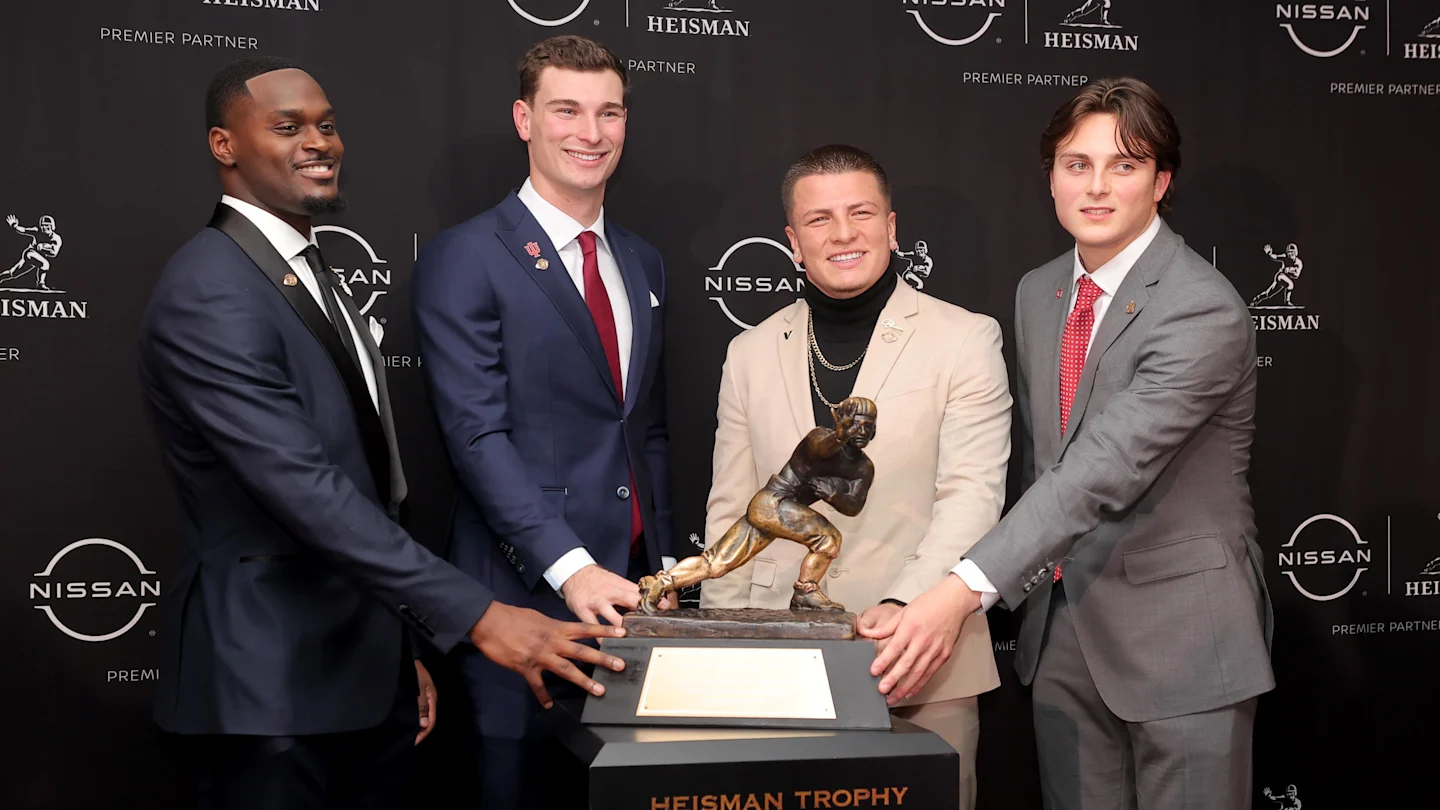
Indiana capped a perfect 13–0 regular season by winning the Big Ten title, snapping a long skid against Ohio State and securing the No. 1 seed in the expanded College Football Playoff.
Under second-year head coach Curt Cignetti (24–2 at Indiana), the Hoosiers authored a program-defining season that thrust the program firmly into the national spotlight.
In his first year at Indiana after transferring from Cal, quarterback Fernando Mendoza completed 226-of-316 passes (71.5%) for 2,980 yards, 33 passing touchdowns and six interceptions, while adding 240 rushing yards and six rushing scores.
He posted the second-highest passer rating among starting quarterbacks (181.4) and ranked fifth nationally in completion rate, sweeping major awards including the Heisman Trophy, Maxwell Award, Davey O’Brien Award, AP Player of the Year, and Big Ten Offensive and Quarterback of the Year honors.
Following his historic season, On3’s Pete Nakos ranked Mendoza as the top transfer addition of the 2025 season, pointing to his immediate, program-altering impact in Indiana’s breakout campaign.

A Christopher Columbus High School (Miami, FL) product, Mendoza entered the Power Five ranks as a three-star recruit and the No. 140 quarterback in the 2022 class according to 247Sports.
He steadily developed in California, highlighted by a career-best 3,004 passing yards, 16 touchdowns and six interceptions in 2024, before transferring to Indiana in December 2024.
That foundation set the stage for a 2025 breakout that elevated him into arguably the sport’s top quarterback and one of college football’s most valuable NIL assets, with an estimated valuation of $2.6 million.
Several national outlets and mock-draft models also project Mendoza as a potential top-10 pick in the 2026 NFL Draft.
As the No. 1 seed in the College Football Playoff, Indiana is scheduled to face No. 9 Alabama in the Rose Bowl quarterfinal on January 1.
A win would send the Hoosiers to the CFP semifinals (Jan. 8–9) and potentially the national championship game on Jan. 19, a run that would further solidify Mendoza’s rapid rise.
Read More at College Football HQ
- 25-touchdown RB shares farewell note after entering college football transfer portal
- College Football Playoff team loses All-Conference player to transfer portal
- College football team loses three All-Americans to transfer portal
- $2.4 million QB connected to major college football program in transfer portal
NIL
Tom Izzo on Pro Players Getting College Eligibility: ‘Shame’ on NCAA, Coaches
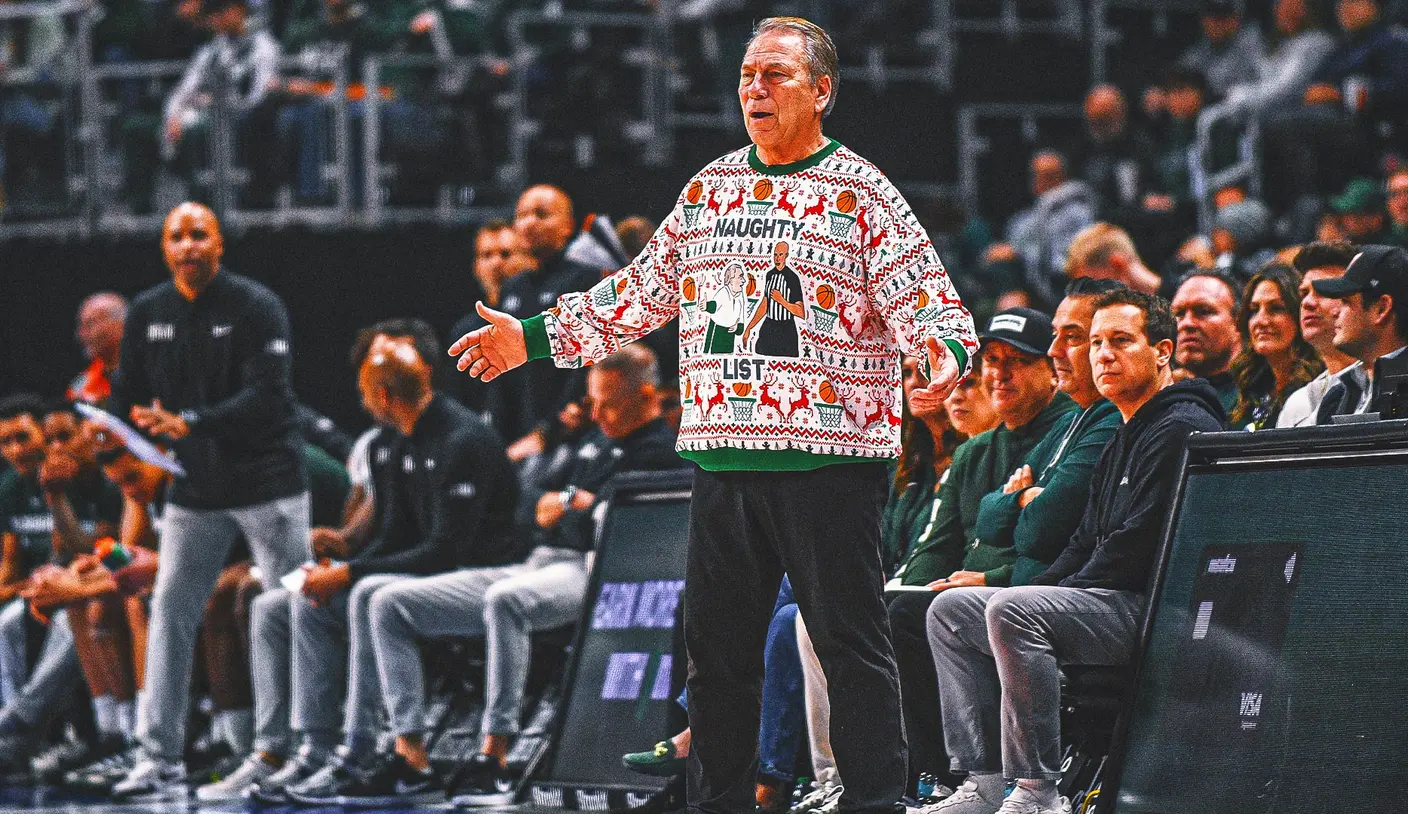
Longtime Michigan State coach Tom Izzo isn’t mincing words when it comes to the recent surge of former NBA G League players and international pros getting the green light to play college basketball around the country.
On Christmas Eve, Baylor received a commitment from James Nnaji, the 31st overall pick in the 2023 NBA Draft. The 21-year-old Nnaji, a 7-foot center from Nigeria, was granted immediate eligibility as a midseason addition and will have four years of eligibility remaining, according to USA Today.
“I thought I’d seen the worst — then Christmas came,” Izzo said, per USA Today. “What happened just topped it. … Now we’re taking guys that were drafted in the NBA and everything? … If that’s what we’re going to, shame on the NCAA. Shame on the coaches, too, but shame on the NCAA because coaches are gonna do what they gotta do, I guess, but the NCAA is the one.
“Those people on those committees that are making those decisions to allow something so ridiculous. … I just don’t agree with it.”
Nnaji never actually played in the NBA or the G League, but he did appear in five NBA Summer League Games for the New York Knicks in July and played professionally overseas last season in Spain and Türkiye.
This isn’t the first time a situation like Nnaji’s has presented itself. In October, the NCAA ruled to allow guard London Johnson, 21, to join Louisville next year with two seasons of eligibility despite him having played three years in the G League.
Izzo revealed that he received a text from “a very famous, great coach” that criticized these fluid eligibility rules. “What we’ve done in the NCAA has been an absolute travesty to me,” the message read, according to USA Today.
Izzo went on to predict that, if polled, “maybe 5-10%” of D-I coaches would agree with these changes.
“If that’s the way it is, and if I have to make those adjustments, then let’s make them,” he added. “Let’s go pro if that’s the way it is, but let’s not be half you-know-what.
“Because there’s no such thing as being half that.”
Want great stories delivered right to your inbox? Create or log in to your FOX Sports account, and follow leagues, teams and players to receive a personalized newsletter daily!
NIL
Michigan NIL collective Champions Circle hits ground running after Kyle Whittingham hire
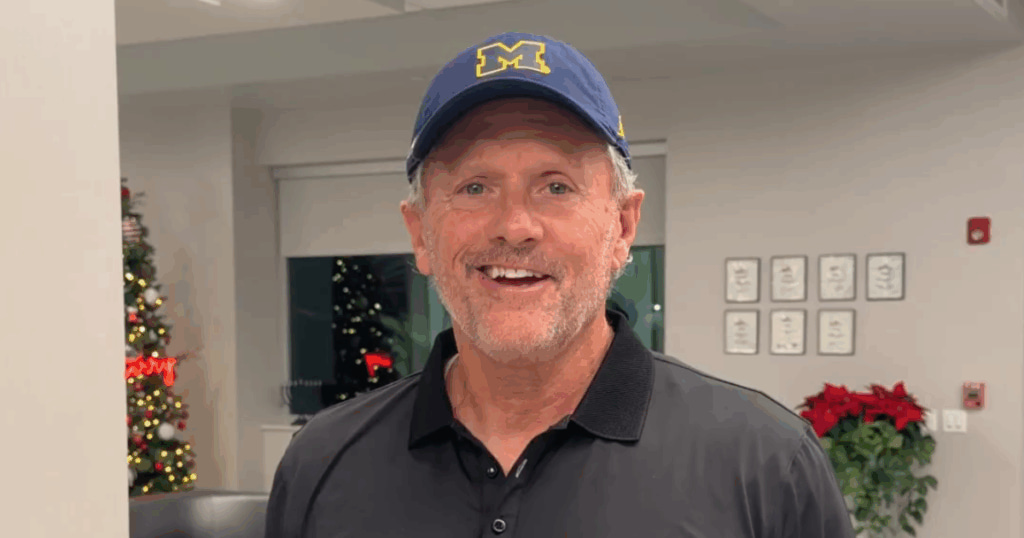
The coaching search is over, but the work is just beginning. Michigan Wolverines football has a new leader in Kyle Whittingham, the 22nd head coach in program history, and he’s already hard at work in Orlando as the Maize and Blue prepare for the Dec. 31 Citrus Bowl against Texas.
Michigan’s official NIL collective, Champions Circle, has launched its ‘Membership 2.0,’ an opportunity for fans to receive “new benefits, new opportunities to engage with players and coaches and new ways to support those who wear the Maize and Blue.”
Advertisement
“As Coach Whittingham takes the helm to lead the next chapter in Michigan football history, one thing is clear: success in today’s college football landscape requires support from each and every fan,” the collective shared in a press release.
By becoming a Champions Circle member, Michigan fans are “directly supporting NIL opportunities that help:
• Empower our new coach to establish the next great era of Michigan Football
• Build championship-level depth at every position
• Prevent rivals from poaching our top talent
The First 100 New Yearly Victors & Valiant Members will receive a football signed by Whittingham and freshman quarterback Bryce Underwood AND an invitation to a first-of-its-kind “Meet Coach Whittingham” webinar in 2026.
Advertisement
Here are details on membership tiers for Champions Circle:

The 66-year-old Whittingham is already in Orlando connecting with Michigan staff, players and their families. The Wolverines have one game remaining but are also focused on next season.
Whittingham was introduced to Michigan fans on social media Saturday evening and will hold his introductory press conference Sunday morning at 11 o’clock from the team hotel.
NIL
Super-sized conferences are breaking college football
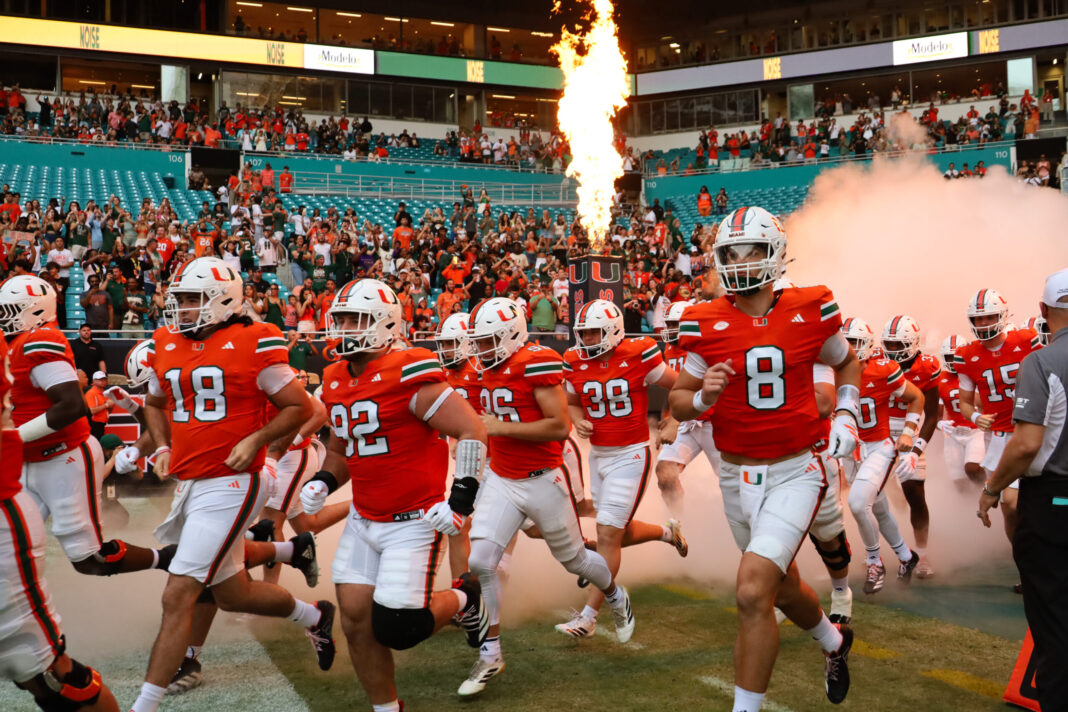

The dawn of NIL has forced a realignment of college conferences, putting pressure on the structure of conference championships. When you look at the Power Four football conferences (ACC, Big 10, Big 12, and SEC), each have expanded somewhere between 16 and 18 members.
The past two seasons have demonstrated that the current conference championship format is not equipped to corral the super-sized power conferences. Deciding the top teams in the country is left to too many qualitative metrics (strength of schedule, head to head, and common opponents).
Something needs to change.
Texas A&M’s path to CFP
Looking at the SEC, Texas A&M had a historic 11-1 regular season, good for one of the best records in the nation. However it featured in-conference wins against seven out of the nine worst teams in the SEC; and every team they beat had a conference win percentage of .500 or worse.
The Aggies season would end in disappointing fashion as they lost twice in a row, against in-state rival the Texas Longhorns 27-17 and in the first round of the College Football Playoff against the Miami Hurricanes 10-3.
A&M arguably only faced three impressive teams all season (Miami, Notre Dame, Texas), and its only win of the three came in the form of a controversial one-point victory over ND in Week 2.
TAMU is one of multiple glaring examples of how massive conferences allow teams to waltz unscathed through their conferences thanks to scheduling issues.
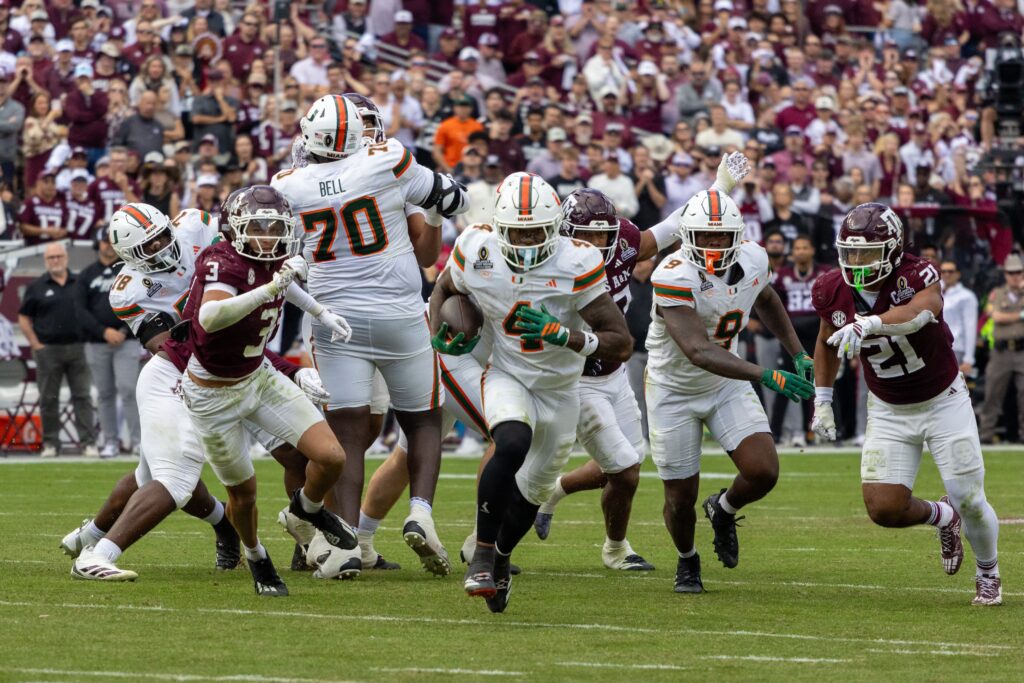
Is a return to Divisions the solution?
It would seem creating divisions within the conferences should be closely considered. This would stoke more fierce rivalries among inter-division opponents, ensuring more even matchups and a clearer cut conference championship.
Looking to the past, all of the Power Four conferences had divisions but were eliminated across the last decade — a division format made less sense with smaller membership.
In 2024, the Big 12 (with 16 members) had a four-way tie at the top of the conference between Arizona State, Iowa State, BYU, and Colorado, who all finished with a 7-2 record. By the end Arizona State and Iowa State faced off due to tiebreakers, but many thought that BYU was more deserving than Iowa State.
This season in the ACC (with 17 members), Virginia guaranteed their spot after a 7-1 conference record, but there was a 5-way tie for second place between Duke, Miami, Georgia Tech, SMU, and Pitt. As Miami fans well know, the unranked 7-5 Duke Blue Devils were awarded the second spot over a 10-2 Miami team ranked No. 12 in the country at the time.
Applying the Divisions to the ACC
When looking at the ACC, the conference has 17 members, which forces teams to play more or less games than one another. All of this would be solved if another team joined the conference.
But let’s concentrate on how the current structure of the ACC would address this issue. There would be three main things taken into consideration: rivalries, location, and talent. It might look something like this:
ACC North: Syracuse, BC, Pitt, Louisville, VT, Virginia, Clemson and Georgia Tech
ACC South: Miami, FSU, SMU, Cal, Stanford, Duke, UNC, NC State and Wake Forest
For the divisions, it would be fair to re-evaluate every five years whether the two divisions are evenly split. Currently the competition would be tight; each division would be well balanced.
The proposed system would also allow scheduling and travel to be much simpler; every division team plays one another, the north would have 7 conference games while the south would have 8. At the end of the season, the two representatives from each division would face-off for the championship.
As some guidelines here are the five hypothetical tiebreaker rules:
1 – Conference Record
Conference records always take importance over every guideline but would have more weight as every team faces each other.
2 – Head to Head
Due to everyone facing off this should solve for tiebreakers except for three (or more) way ties.
3 – Overall Record
In the case of Miami – Duke the tiebreaker was Win Percentage of Conference opponents. In the context of a 7-5 record, the overall record should have more weight.
4 – National Ranking (AP poll / CFP)
Ideally the conference championship should be settled by this point but if it goes this far National Ranking should be considered in ensuring that the best teams compete for the conference championship.
Will realignment fix everything?
Fans want more entertaining matches and teams want ease of scheduling and travel.
The answer is simple — either return to smaller conferences or implement divisions to make conferences matter.
In the end, no matter the solution, it won’t be perfect. Sports fanatics will always say that there will be a better format, but the least we can do is learn from past mistakes.
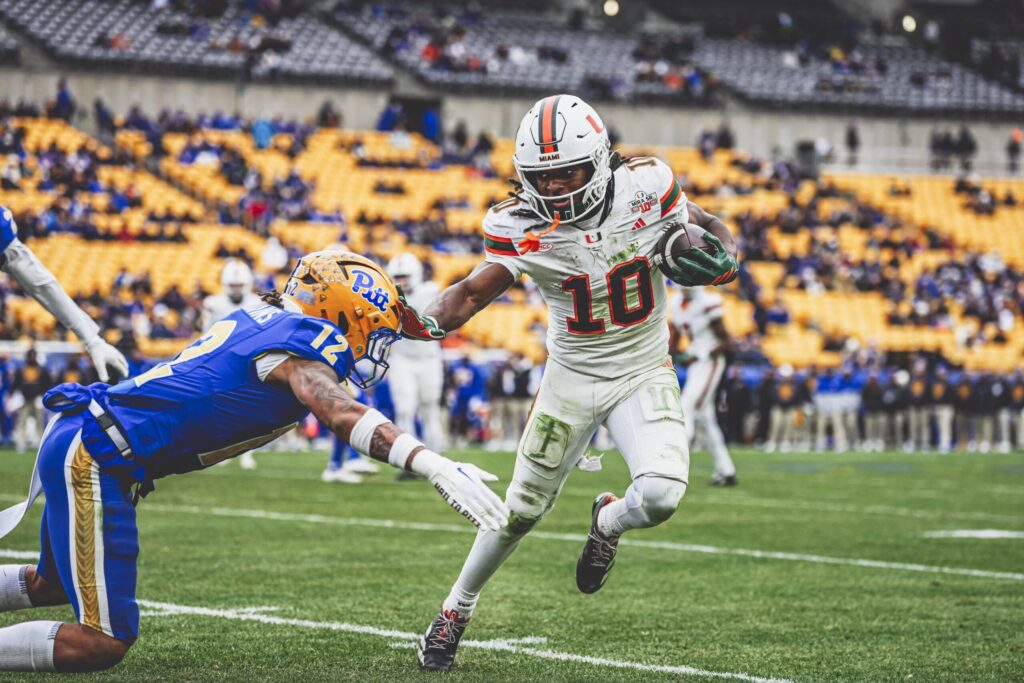
-

 Motorsports3 weeks ago
Motorsports3 weeks agoSoundGear Named Entitlement Sponsor of Spears CARS Tour Southwest Opener
-

 Motorsports3 weeks ago
Motorsports3 weeks agoRick Ware Racing switching to Chevrolet for 2026
-

 NIL3 weeks ago
NIL3 weeks agoDeSantis Talks College Football, Calls for Reforms to NIL and Transfer Portal · The Floridian
-
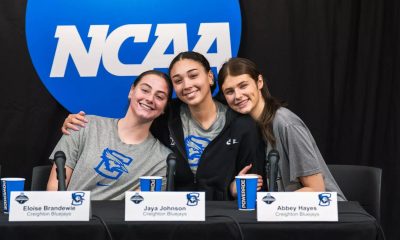
 Sports2 weeks ago
Sports2 weeks ago#11 Volleyball Practices, Then Meets Media Prior to #2 Kentucky Match
-

 Motorsports2 weeks ago
Motorsports2 weeks agoSunoco to sponsor No. 8 Ganassi Honda IndyCar in multi-year deal
-
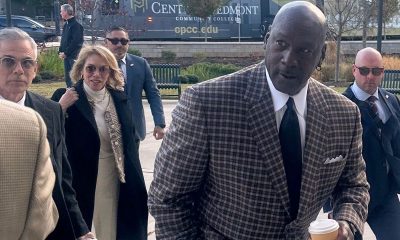
 Motorsports3 weeks ago
Motorsports3 weeks agoNASCAR owes $364.7M to teams in antitrust case
-
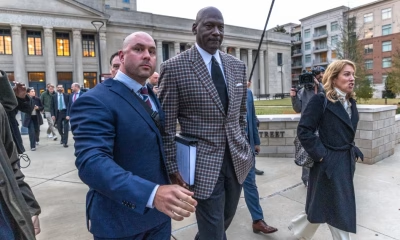
 Motorsports2 weeks ago
Motorsports2 weeks agoNascar legal saga ends as 23XI, Front Row secure settlement
-
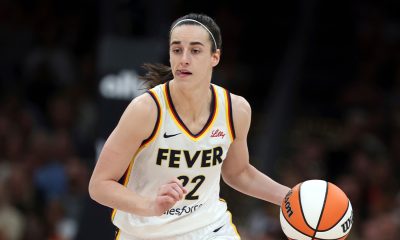
 Rec Sports2 weeks ago
Rec Sports2 weeks agoWNBA’s Caitlin Clark, Angel Reese and Paige Bueckers in NC, making debut for national team at USA camp at Duke
-

 Motorsports3 weeks ago
Motorsports3 weeks agoAccelerating Inclusion: Breaking Barriers in Motorsport
-
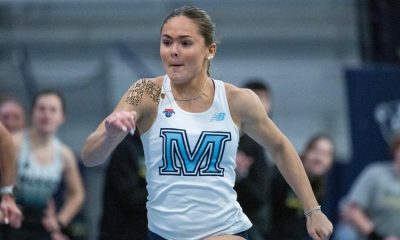
 Sports2 weeks ago
Sports2 weeks agoMaine wraps up Fall Semester with a win in Black Bear Invitational







































